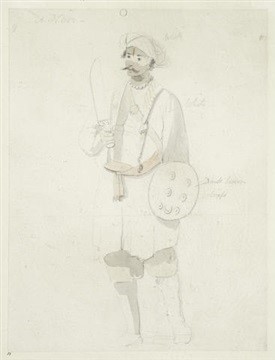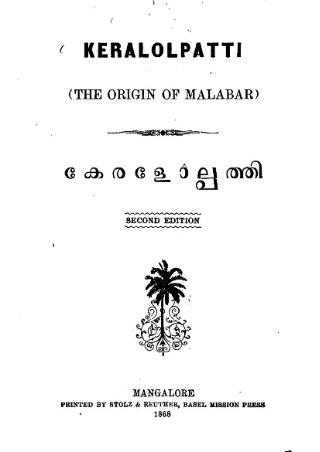
The Nair also known as Nayar, are a group of Indian Hindu castes, described by anthropologist Kathleen Gough as "not a unitary group but a named category of castes". The Nair include several castes and many subdivisions, not all of whom historically bore the name 'Nair'. These people lived, and continue to live, in the area which is now the Indian state of Kerala. Their internal caste behaviours and systems are markedly different between the people in the northern and southern sections of the area, although there is not very much reliable information on those inhabiting the north.
Pushpaka is a caste of Hindu Brahmins of Kerala. In Malayalam language, this caste is also referred to as Pushpakan, Pushpakar, Pushpaka Unni or Pushpakan Unni. They are a part of the Ambalavasi community in Kerala.
Azhvanchery Thamprakkal or Azhvanchery Samrāṭ is the title of the senior-most male member of the Nambudiri Brahmin feudal lords of Azhvanchery Mana in Athavanad, Kerala, South India. They had the right over Guruvayur, and were the titular head of all Nambudiri Brahmins of Kerala. The Lord of Azhvanchery based at Athavanad and the Lord of Kalpakanchery based at neighbouring Kalpakanchery were usually present at the coronation of a new Zamorin of Kozhikode. Kalpakanchery Thamprakkals were related to the Nambudiris of Panniyoor while Azhvanchery Thamprakkals to those of Chowwara.
The caste system in Kerala differed from that found in the rest of India. While the Indian caste system generally divided the four-fold Varna division of the society into Brahmins, Kshatriyas, Vaishyas and Shudras, in Kerala, that system was absent. The Malayali Brahmins formed the priestly class and Nairs formed Aristocracy, rank immediately below malayali Brahmins. Brahmins labeled all other castes as "Sat-sudra", "Shudra" and "Avarna" based on their origin and ritual rank. The exception to this were the military elites among the Samantha Kshatriyas and the Nairs, who were ritually promoted to the status of Kshatriya by means of the Hiranyagarbha ceremony. This was done so that the Samanthans and Nairs could wield temporal ruling powers over the land, as they constituted the aristocratic class.

The Nambudiri, also transliterated as Nampoothiri, Nambūdiri, Namboodiri, Namboothiri and Nampūtiri, are a Malayali Brahmin caste, native to what is now the state of Kerala, India, where they constituted part of the traditional feudal elite. Headed by the Azhvanchery Thamprakkal Samrāṭ, the Nambudiris were the highest ranking caste in Kerala. They owned a large portion of the land in the region of Malabar, and together with the Nair monarchs, the Nambudiris formed the landed aristocracy known as the Jenmimar, until the Kerala Land Reforms starting in 1957. Naturalized Tulu Brahmins who took up Nambudiri customary ways are known as Embranthiri Brahmins.

Malayali Brahmins or Kerala Brahmins are the group of Brahmins from the Indian state of Kerala. These groups include the Nambudiri, Pushpaka Unni][Pushpaka|Kurukkal, Nambeesan, Nambidi, Moothath (Moosad), Ilayath, Chakyar, Nambiar, and the Potti. The Pidarar community are Brahmins that follow Kaula sampradaya.

)Ramayyan Dalawa was the Dewan of Travancore state, India, during 1737 and 1756 and was responsible for the consolidation and expansion of that kingdom after the defeat of the Dutch at the 1741 Battle of Colachel during the reign of Maharajah Marthanda Varma, the creator of modern Travancore.

Pushpaka Brahmin is a generic term that refers to a group of certain Hindu Ambalavasi castes in Kerala.

The Keralolpathi is a Malayalam Hindu literary work that deals with the origin and legends of the land of Kerala. P. Shungunny Menon ascribes the authorship of this work to Thunchaththu Ramanujan Ezhuthachan, a 17th-century scholar of the Malabar region of India. A. Sreedhara Menon dates the work to 18th or 19th century. The Keralolpathi is mostly an expansion from an earlier Sanskrit work known as the Kerala Mahatmayam. That work is classed among the Hindu Puranas as an Upa Purana of the Bhoogola Purana.
Kaniyar is a caste from the Indian state of Kerala. There are regional variations in the name used to define them. They are listed under the Other Backward Communities (OBC) by the Kerala Government.

The population of Kerala, India is a heterogenous group that comprises many ethnic groups that originated in other parts of India as well as the world, with distinctive cultural and religious traditions. While the majority of Keralites speak the Malayalam language, various ethnic groups may speak other languages as well.
There are numerous ceremonies and customs adopted by the Nair caste, which is prominent in the South Indian state of Kerala.

Kiryathil Nair or Kiriyath Nair is a Kshatriya subdivison of Nair caste, of martial nobility, having performed the functions of Kshatriyas in Kerala, India.They also did business, industry, medicine and accounting.But as they were Kshatriya sub-division their main occupation was martial nobility.

Vaikom Satyagraha, was a nonviolent agitation for access to the prohibited public environs of the Vaikom Temple in the Kingdom of Travancore. Kingdom of Travancore was known for its rigid and oppressive caste system. The campaign, led by Congress leaders T. K. Madhavan, K. Kelappan K. P. Kesava Menon, George Joseph, E. V. Ramasamy "Periyar" and was noted for the active support and participation offered by different communities and a variety of activists.After the intervention of Mahatma Gandhi, a compromise was reached with Regent Sethu Lakshmi Bayi who released all those arrested and opened the north, south and west public roads leading to Vaikom Mahadeva Temple to all castes. Bayi refused to open the eastern road. The compromise was criticized by E. V. Ramasamy "Periyar" and some others. Only in 1936, after the Temple Entry Proclamation, was access to the eastern road and entry into the temple allowed to the backward castes.

Pillai, meaning Prince, is a title of nobility which can either refer to a ruling chief, members of the nobility, or junior princes of the royal family historically ranked immediately below the king. The oldest lineages of Pillais include not only Kshatriyas but also brahmins who took up the sword. From the early modern period, the title also came to be bestowed upon Savarna subjects by the King of Travancore for services military or political, most of whom were of Nair origin.

Vazhappally Maha Siva Temple is a Hindu temple located in Vazhappally near Changanassery in Kottayam district in the Indian state of Kerala. The temple is administered by the Travancore Devaswom Board. The temple is believed to be constructed by the first Chera king of Kodungallur. The legends suggest that the installation of the idol of god Mahadeva (Shiva) was performed by Parasurama himself. This temple is one among the 108 Shiva temples established by Parasurama. It is one of the few temples in Kerala where two nalambalams and two flag-masts are dedicated. The temple, a Grama Kshetra, also contains some seventeenth century wood carvings depicting figurines from epics. A Vattezhuttu inscription on the northern part of the base of the cultural shrine indicates that the repairs were completed in Kollam Era 840 (1665 AD).
Palliyarathalam Bhadrakali Kshethram is an ancient temple located at Nedumprom East in Pathanamthitta in the Indian state of Kerala. The deities of the temple are Devi (Bhadrakali) and Shiva. The temple belongs to Travancore Devaswom Board.
Potti, also written as Potty, is a sect of Brahmins in Kerala state of India.










